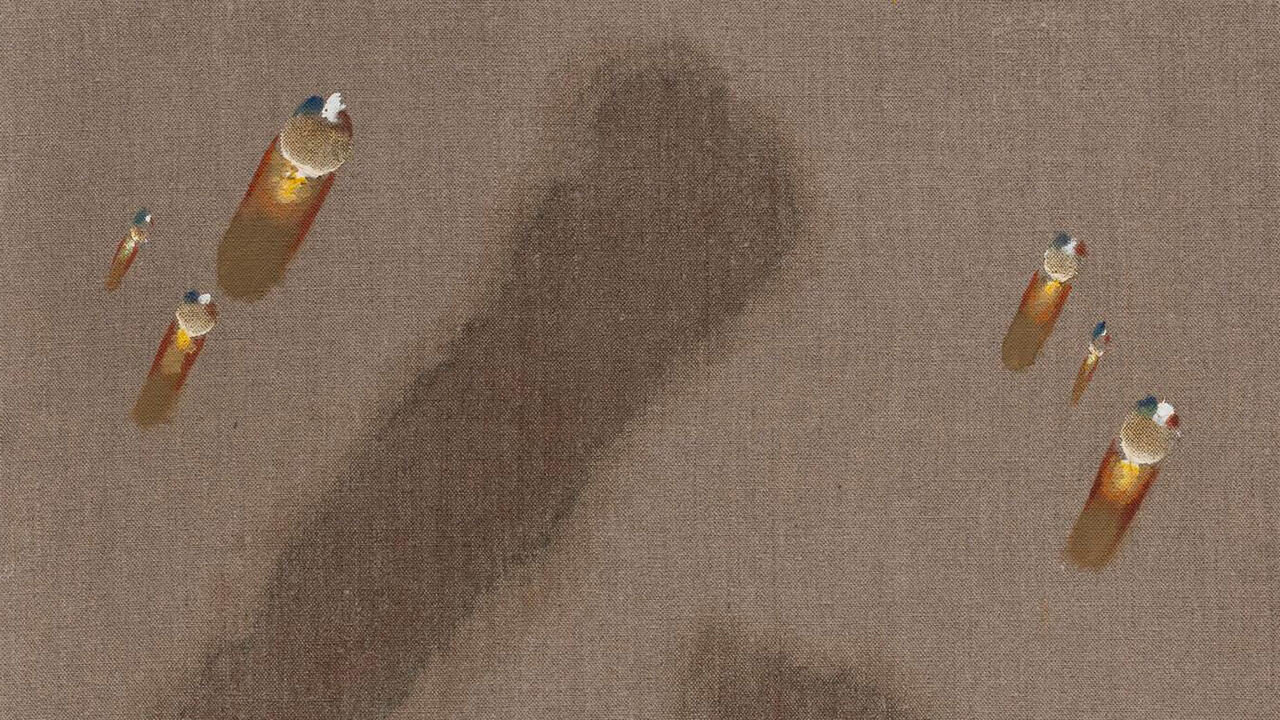Ginny Bishton
If there were any truth in the expression 'you are what you eat', then we would know a lot about Ginny Bishton after viewing her most recent work. But we don't, and that says something about the curious reticence she can bring to the most ponderous displays of visual information. From February to September of 1997, Bishton shot 4,000 photographs of the fruit and vegetables that were consumed in her household. Having cut the individual shape of each Brussels sprout, each onion, raspberry, string bean, etcetera, out of the photos one by one, she then sorted them into groups on a long horizontal sheet of paper - the untitled composition ends up resembling a grocer's display. It may be tempting to try and read something about the artist from this portrait of her diet, but it isn't very productive. Judging from the proportions represented, one detects a weakness for strawberries, compared to only a passing interest in watermelon, not much use for radishes, and an over-reliance on salad greens... about the only safe conclusion one can draw is that she's probably thin.
What the artist has composed would look like a cornucopia, except that the hilarious fussiness with which she enumerates every single item suggests a kind of parsimony as much as bounty. But then, abundance can do weird things to the appetite - only in countries where food is copious do you find disorders like bulimia, for example. Bishton puts her finger on this spirit of contrariness. Indeed, the way she dotes on the lacy edge of every leaf of romaine and lays each miniaturised carrot side by side with hardly any overlap, brings new meaning to the idea of something done ad nauseam. Her working method involves a kind of regurgitation. By being so task-oriented, it makes a show of not interpreting its subject - everything remains undigested.
Everything also feels riddled with apprehension. In a project from 1995 which was also based in performance, photography and food, Bishton printed 1,200 tiny images of herself measuring the ingredients for a loaf of bread into a bowl. These were arranged sequentially, like the individual frames from a movie. But because each was posed and shot separately over the course of an entire year using the auto-timer on her camera, continuity became more than just a photographic issue, it was the entire substance of the drama.
Her collage of foodstuffs works in the same way. It begins as a catalogue, but quickly becomes something more intense, something closer to a taxonomy, which in turn becomes a reckoning and finally ends up as a kind of verification: the bottom line proof of existence - I ate, therefore I am. It's like the work of a person who keeps a diary of their daily activities, no matter how mundane. In fact, the more mundane the better, since the point of writing these trivial things down is to compensate for the very substantiality they seem to lack.
If Bishton's photo-performance pieces seem haunted by this anxiety, her paintings on paper are the antidote: they compress time, making it virtually palpable through their impacted surfaces. Each untitled work uses a set of four simple marks and five colours. These are laid down systematically until they begin to accrete into short bars that stack up into larger blocks and either dovetail or overlap with one another, sometimes coming unravelled at the edges. The bars and blocks form regiments that march right off the page, giving the impression that we are only seeing one segment of a much larger spectacle, or, since there's a general feeling of magnification to these pieces, of a much smaller spectacle, as though we were peering inside a colony of ants.
Like those insects, the countless marks in Bishton's paintings - each meaningless by itself - combine to produce a powerful collective intelligence. Despite their individual slightness, they produce an effect of ominous power and mass. This renders Bishton's work far from dispassionate, no matter how calculated her working method may be. Each piece sends off that kind of disengagement, equanimity and lack of expression that one only senses when a discussion starts to cut very close to the bone.
















